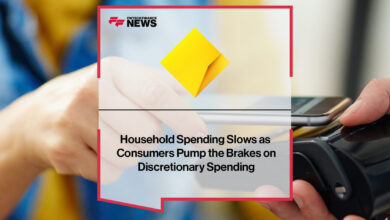PayPal Stock: Q1 Earnings Surprise Hints at a Fintech Comeback Story in the Making

A pioneer in the digital payments space, PayPal (NASDAQ:PYPL) stock is certainly a top global fintech play to consider. The company constantly explores innovative payment structures and pushes for disruption. The company’s entry into crypto is one example of its ongoing pursuit of diverse business lines.
Last year was certainly a rocky one for PYPL stock. However, the company showed resilience, posting strong Q1 results.
The company posted excellent profit growth and achieved a 300 basis point increase in its gross margins. That’s the kind of top- and bottom-line beat the market wanted to see.
With a $5 billion free cash flow forecast and a $17.7 billion cash reserve, the company is well-positioned for acquisitions to boost growth amid a stagnant active account base. Let’s dive into some of the tailwinds and headwinds to consider with this stock.
Investment in Qoala
Omnichannel InsurTech company Qoala completed its Series C funding round, raising $47 million led by PayPal Ventures and MassMutual Ventures.
The funding will expand its embedded insurance business in Southeast Asia, enhance AI integration, and improve customer, agent, and partner experiences. Additionally, Qoala will explore new products, channels, and strategic acquisitions to solidify its market position.
Harshet Lunani, founder and CEO of Qoala, emphasized that the Series C funding reflects market confidence in the company’s mission to democratize insurance. He noted the funds would bolster the company’s ability to drive innovation and positively impact lives.
Alexandros Bottenbruch of PayPal Ventures praised Qoala for its swift achievements and effective solutions for consumer platforms and traditional agents in addressing Southeast Asia’s protection gap.
Qoala’s growth since 2019 has been impressive, as has their market leadership. Qoala achieved 2.5x growth in gross written premiums and has processed 60% of claims in-house since its Series B in 2022.
Expanded partnerships and rising profitability highlight its commitment to financial inclusion and sustainable performance, and PayPal’s investment in this company appears to be a bright one.
What Makes PYPL Stock Attractive
PayPal’s resilience isn’t just about growth and competitive advantage. Its financial strength sets it apart. Despite stock fluctuations, PayPal generated $5 billion in operating income and $4.2 billion in free cash flow last year. This consistent profitability distinguishes it from many other growth-focused tech enterprises.
Despite significant declines, PayPal trades well below its peak, presenting an opportunity. Pessimistic sentiment keeps its forward price-earnings ratio low at 15.2-times, a discount to the S&P 500.
Given its strengths, PayPal merits higher market regard. With sustained revenue and earnings growth, valuation multiples should rise, benefiting shareholders.
The Numbers Say Its All
Over the past year, PayPal stock trailed the S&P 500, rising only 4.9% compared to the index’s 27.5% surge. Despite a 5% increase in 2024, PayPal still lags behind SPX’s 11.2% YTD gains. PYPL also underperformed the GX Fintech ETF, which rose 26.7% over the year.
Fierce competition from tech giants like Apple, Google, and other fintech players affected PayPal’s performance. Its breakup with eBay and inflationary pressures further hindered the company’s growth.
However, following strong Q1 earnings on April 30, PayPal shares rose. Customer spending resilience and cost reductions bolstered profitability. Adjusted profit guidance for fiscal 2024 was raised. Analysts expect 9.3% EPS growth to $4.13 for FY2024.
Despite mixed earnings surprises, PYPL’s consensus rating remains a moderate buy, supported by 41 analysts. I take a similar view of the company, as I do think PayPal has the potential to outperform the market, but there are certainly risks worth noting.
On the date of publication, Chris MacDonald did not have (either directly or indirectly) any positions in the securities mentioned in this article. The opinions expressed in this article are those of the writer, subject to the InvestorPlace.com Publishing Guidelines.



